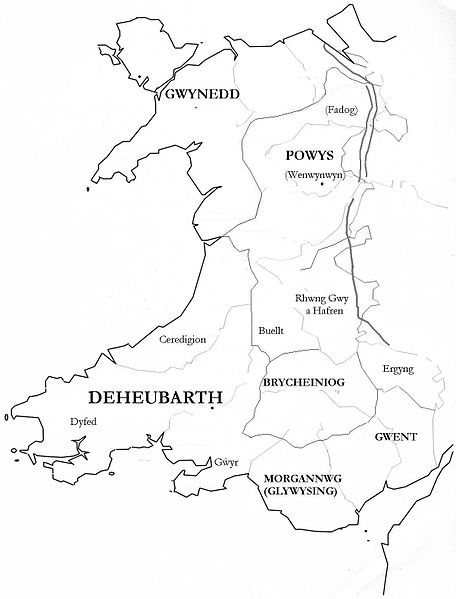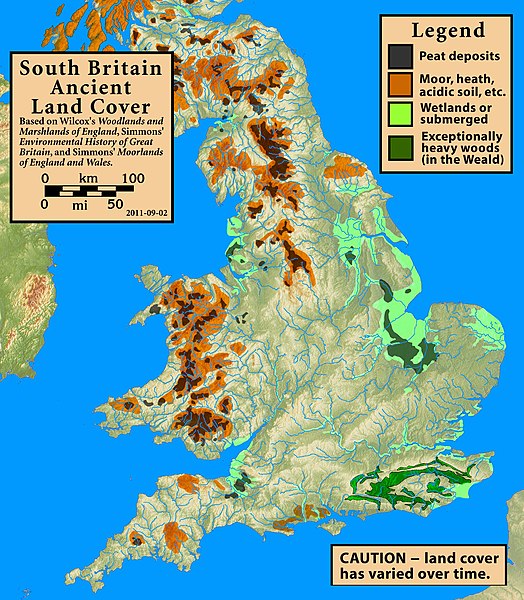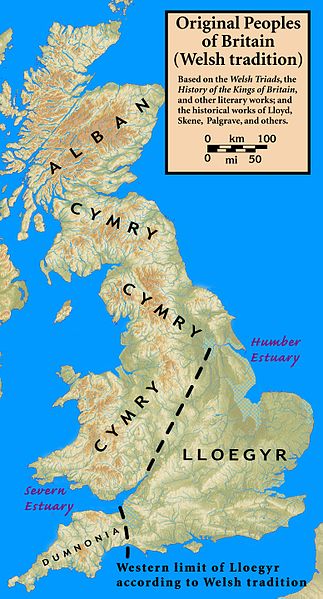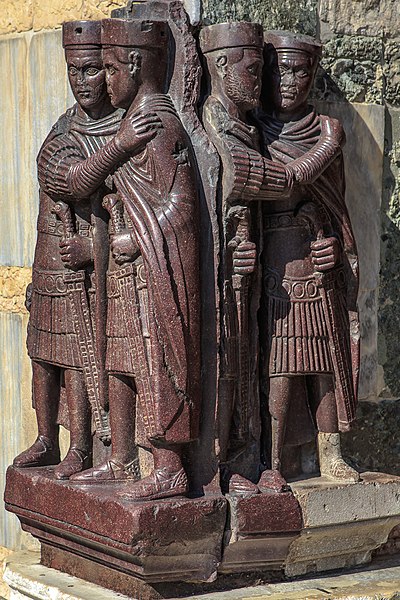Wales in the early Middle Ages
Wales in the early Middle Ages covers the time between the Roman departure from Wales c. 383 until the middle of the 11th century. In that time there was a gradual consolidation of power into increasingly hierarchical kingdoms. The end of the early Middle Ages was the time that the Welsh language transitioned from the Primitive Welsh spoken throughout the era into Old Welsh, and the time when the modern England–Wales border would take its near-final form, a line broadly followed by Offa's Dyke, a late eighth-century earthwork. Successful unification into something recognisable as a Welsh state would come in the next era under the descendants of Merfyn Frych.
Post-Roman Welsh kingdoms.
Medieval kingdoms of Wales are shown within the boundaries of the present-day country of Wales and not inclusive of all.
Ancient land cover of southern Britain.
The peoples of Britain according to medieval Welsh tradition.
In the history of Europe, the Middle Ages or medieval period lasted approximately from 500 AD to 1500, although some prefer other start and end dates. The Middle Ages is the second of the three traditional divisions of Western history: antiquity, medieval, and modern. Major developments include the predominance of agriculture in the economy, the exploitation of the peasantry, slow interregional communication, the importance of interpersonal relations in power structures, and the fragility of state bureaucracy. The medieval period is itself sometimes subdivided into the Early, High, and Late Middle Ages, and the early medieval period is alternatively referred to as the Dark Ages.
A stained glass panel from Canterbury Cathedral, c. 1175 – c. 1180. It depicts the Parable of the Sower, a biblical narrative.
Palais des Papes (Avignon, France)
One Zhiznomir's letter to a certain Mikula written on birch bark in the city of Novgorod in the early 12th century
Portrait of the Four Tetrarchs (now in Venice, Italy)








